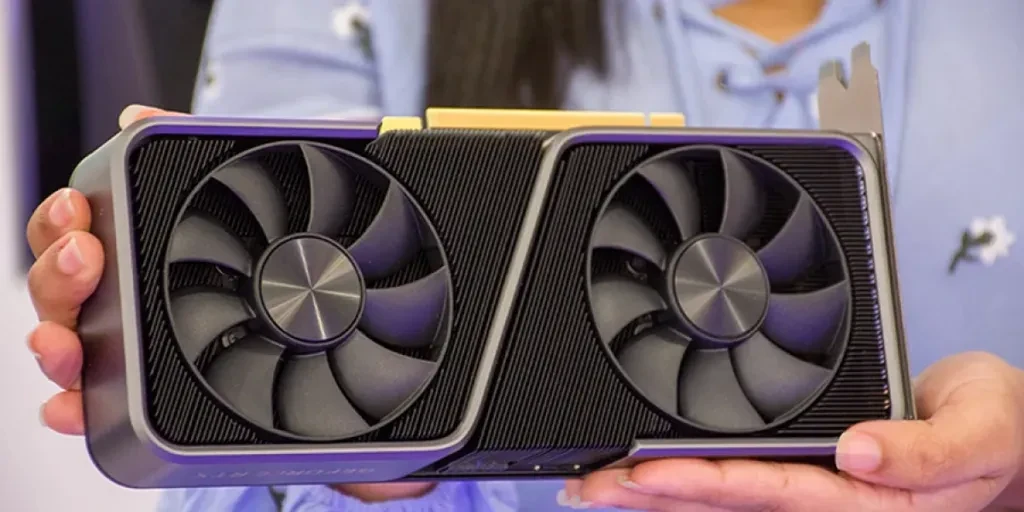Rice cookers make cooking rice simple, which is why they are seen as an essential in many kitchens around the world. For retailers, stocking rice cookers can be a safe way to cater to this growing global market. And if you don’t know where to get started, don’t worry—this guide has you covered!
Read on for everything you need to know about stocking rice cookers, including the top features to look out for, to ensure more sales in 2025.
Table of Contents
What is a rice cooker?
Rice cookers vs. other appliances: What’s the difference?
Why choose a stainless steel rice cooker?
Key features to look for in a rice cooker
Tips for cooking the perfect rice
What you need to know about cooking different types of rice
Can rice cookers cook anything else?
Top stainless steel rice cooker recommendations
Conclusion
What is a rice cooker?
A rice cooker is an electric appliance designed to cook rice with minimal effort. It typically consists of a conduction heating element, an inner pot, and a thermostat that controls the cooking temperature. Once the rice reaches the proper moisture level, the cooker automatically switches to “keep warm” mode to prevent overcooking.
Modern rice cookers often include additional features such as timers, steaming trays, and multiple cooking settings.
Rice cookers vs. other appliances: What’s the difference?
Several kitchen appliances can cook rice, so you may be wondering if a rice cooker is the best option? Here are the differences between the main rice cooking methods to help you decide:
- Rice cooker: Designed specifically for rice, these devices ensure consistent results with little supervision. You might choose a rice cooker if you cook rice frequently.
- Instant pot/pressure cooker: While these can cook rice, they require careful timing to prevent overcooking. They are best for those seeking multi-purpose cooking.
- Stovetop cooking: This traditional method requires close monitoring and can result in uneven cooking if not done correctly.
- Microwave rice cooker: A budget-friendly option that cooks rice quickly in the microwave, which can be great for small portions or dorm room setups.
For most people seeking convenience and reliability, a dedicated rice cooker is the best choice.
Why choose a stainless steel rice cooker?
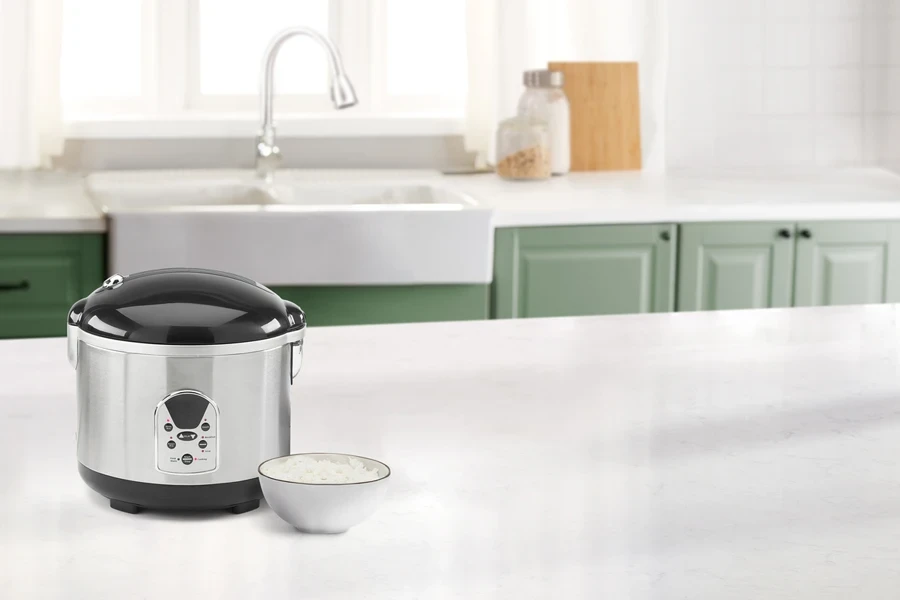
Stainless steel rice cookers stand out for several reasons:
- Durability: Stainless steel is tough, resistant to rust, and can handle daily use.
- Health benefits: Unlike some non-stick coatings that may contain harmful chemicals, stainless steel offers a safer, toxin-free cooking surface.
- Easy cleaning: Stainless steel pots are easier to clean and less prone to stains.
Key features to look for in a rice cooker
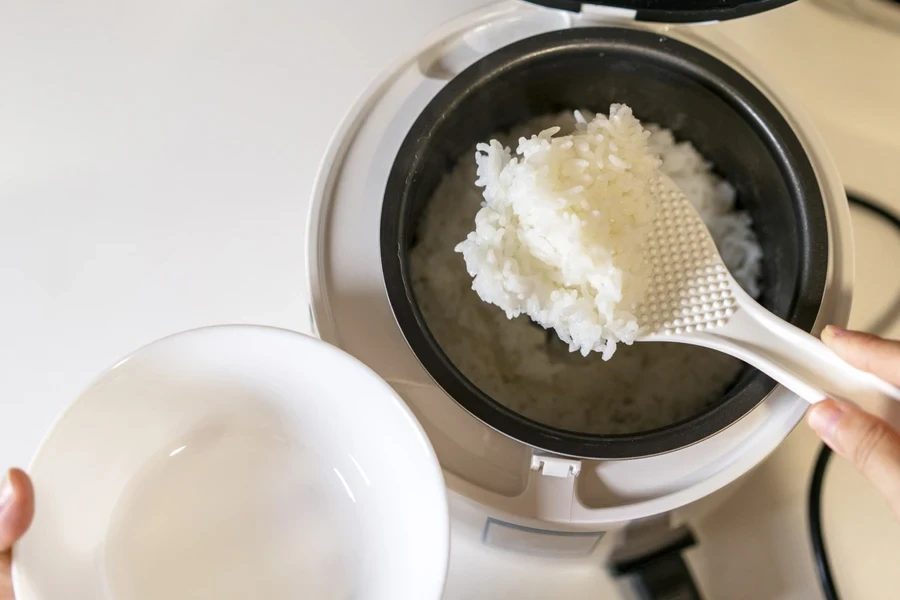
Convinced you need a rice cooker in your kitchen? When shopping for a stainless steel rice cooker, here are the most important features to consider:
Capacity
- Small (3-5 cups): Ideal for singles or couples.
- Medium (5-8 cups): Suitable for families.
- Large (10+ cups): Best for large gatherings or weekly meal prep.
Inner pot material
- Look for a full stainless steel inner pot for better durability and food safety.
- Some models include a layered base for more even heat distribution.
Cooking functions
- Basic models handle white and brown rice well.
- Advanced models may include settings for porridge, sushi rice, or steaming vegetables.
Keep warm function
- This feature keeps rice warm without drying it out, which is ideal for busy households.
Timer and delay start
- Great for meal planning, you can set the cooker to start cooking at a specific time.
Ease of cleaning
- Choose models with removable lids and dishwasher-safe parts for faster cleanup.
Tips for cooking the perfect rice
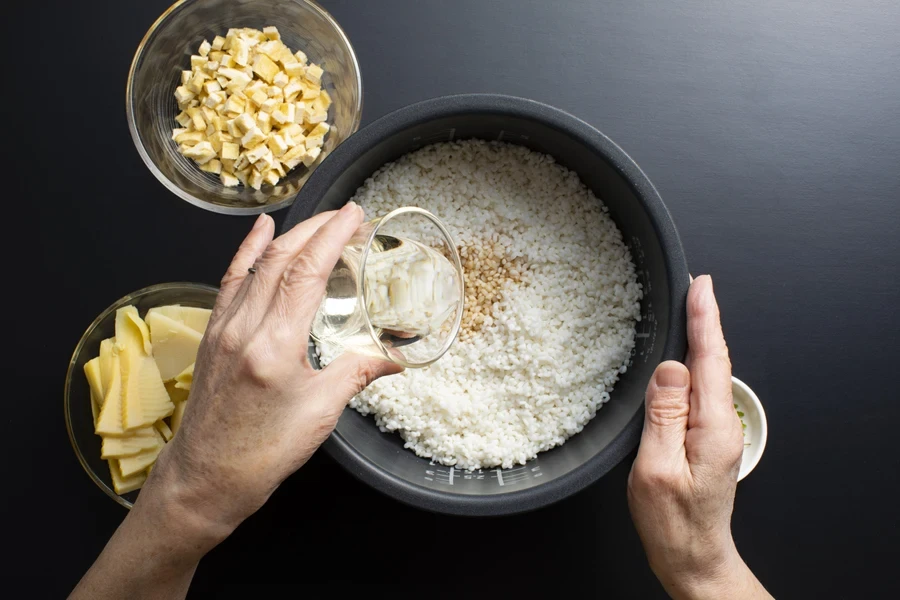
Once you’ve chosen your rice cooker, there are a few things you need to know to ensure your rice is cooked perfectly.
- Rinse your rice: Washing rice before cooking removes excess starch, which helps prevent sticky or gummy results.
- Use the right water ratio: Most rice cookers come with a measuring cup—use it to ensure accurate portions.
- Let it sit after cooking: After the cycle ends, allow the rice to sit for 5-10 minutes before serving for a fluffier texture.
What you need to know about cooking different types of rice
Different types of rice require slightly different cooking methods to get the best texture and flavor. One of the most important things to keep in mind is how many cups of rice per cup of water. Here’s what you need to know about the process of cooking rice:
White rice (long-grain, medium-grain, or short-grain)
- Water ratio: Typically 1 cup of rice to 1.5 cups of water.
- Tips: Rinse thoroughly before cooking to reduce excess starch and achieve fluffy rice.
Brown rice
- Water ratio: Use about 2 cups of water per 1 cup of rice.
- Tips: Brown rice takes longer to cook, so check if your rice cooker has a dedicated brown rice setting.
Jasmine or basmati rice
- Water ratio: Use 1 cup of rice to 1.25 cups of water.
- Tips: Rinse thoroughly to prevent clumping and improve aroma.
Sushi rice/sticky rice
- Water ratio: Use 1 cup of rice to 1 cup of water.
- Tips: For the best texture, soak sushi rice for 30 minutes before cooking.
Wild rice
- Water ratio: Use 1 cup of rice to 3 cups of water.
- Tips: Wild rice requires a longer cooking time, so a rice cooker with a ‘multi-grain’ or ‘porridge’ setting may be ideal.
Can rice cookers cook anything else?
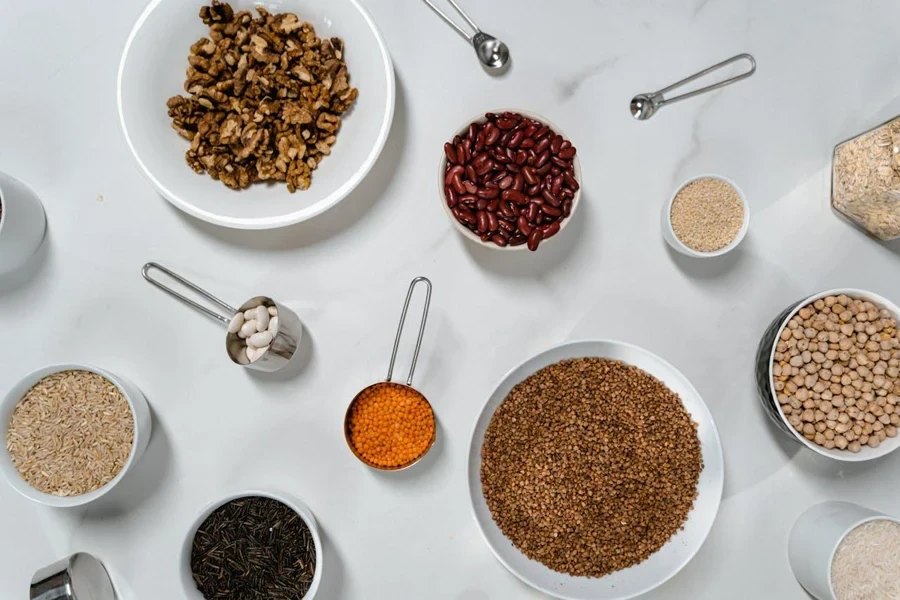
Yes! Many rice cookers are versatile enough to cook a variety of foods beyond just rice. Here are some popular options:
- Quinoa and other grains: Quinoa, farro, barley, and other grains cook beautifully in a rice cooker using a similar water-to-grain ratio as brown rice.
- Oats, porridge, and grits: A great option for breakfast, especially if your rice cooker has a ‘porridge’ setting.
- Steamed vegetables: Many rice cookers come with a steaming tray that lets you steam vegetables while your rice cooks.
- Soups and stews: Larger models with ‘slow cook’ or ‘soup’ settings can make hearty soups or stews.
- Dumplings or dim sum: The steaming function in some rice cookers makes these dishes simple to prepare.
- Boiled eggs: Simply add eggs with a small amount of water and steam for perfectly cooked boiled eggs.
A rice cooker’s versatility makes it a powerful tool for easy, one-pot meals—ideal for busy households or anyone looking to simplify their cooking routine.
Top stainless steel rice cooker recommendations
Here are some trusted brands and models worth considering:
- Instant Pot Duo Crisp: A versatile multi-cooker with a stainless steel inner pot, perfect for those who want a device that can also pressure cook, air fry, and more.
- Zojirushi: Known for its consistent cooking performance and durable stainless steel pot.
- Aroma Housewares: A budget-friendly option that’s simple to use and great for beginners.
- Cuckoo Rice Cooker: A premium choice with pressure cooking features, ideal for cooking sticky or fluffy rice with precision.
Conclusion
Choosing the right stainless steel rice cooker can simplify your meal prep and improve your cooking results. Look for a model that fits your household size, cooking habits, and desired features. Whether you need a basic model or a high-tech multi-cooker, stainless steel options provide durability, safety, and convenience.
Ready to upgrade your kitchen? Explore top-rated stainless steel rice cookers and enjoy perfectly cooked rice with ease.


